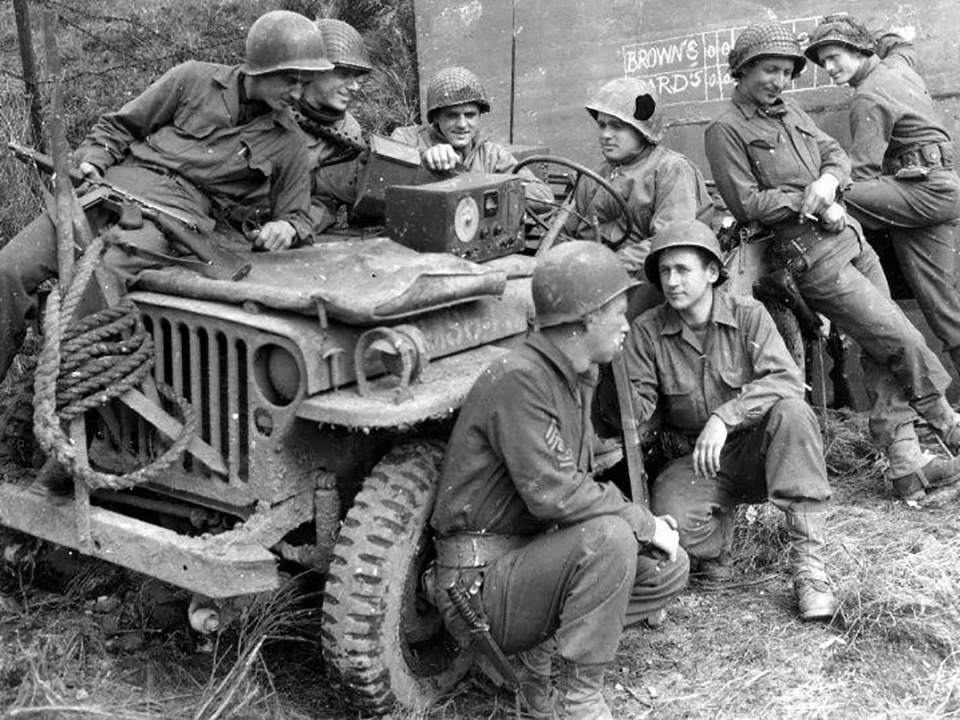The Role of Music in GI Jive
Music played a central role in GI Jive, with the beloved character GI Jane, voiced by Martha Wilkerson. As the host of a DJ music program, she showcased the most popular records, significantly boosting the morale of the troops. Her straightforward yet effective approach combined record requests, light-hearted conversation, and occasional celebrity interviews. Here’s a link to a typical introduction by GI Jane from a 1944 episode.
Innovation of the Jubilee Program
Running from 1942 to 1953, the Jubilee Program was notable for its distinctive approach, specifically targeting African American soldiers. It featured incredible live jazz performances from legends like Lena Horne, Duke Ellington, and Count Basie, and was hosted by the charismatic Ernie “Bubbles” Whitman. His engaging jive-talk made the program popular among a diverse audience, both military and civilian. Listen to Ernie introduce Duke Ellington in a March 1944 show here.
Success of Local Shows
AFRS produced an impressive volume of high-quality shows, but local programs also gained immense popularity among GIs. The standout local show in England was Duffle Bag, hosted by DJ Johnny Kerr. This 26-year-old from Ohio, discovered while peeling potatoes at an Army Camp, quickly became a favorite with troops, garnering the top spot in a poll of soldiers’ preferred radio shows. The two-hour daily broadcast received over 200 music requests each week from enthusiastic fans.
AFN’s Impact on Soldiers and Listeners
Overall, AFN proved to be a tremendous success, serving as a comforting auditory link for American soldiers to their home. For a brief time, the weight of wartime responsibilities faded. British listeners, too, enjoyed the station; older audiences recalled the diverse Radio Luxembourg, while younger listeners embraced its music and laid-back vibe. Notably, AFN inspired future music icons like Van Morrison and Robert Plant.
Broadcasting During the Invasion Preparations
As plans for the European invasion progressed, discussions arose about joint broadcasting initiatives for Allied troops. General Eisenhower emphasized the need for unity among Allied forces, envisioning an “Allied Expeditionary Forces Program” (AEFP) that would collaborate with the British and Canadian Broadcasting Corporations. However, it never achieved the same level of success as AFN.
Challenges of Frontline Broadcasting
Despite the AEFP, AFN continued its broadcasts and prepared for D-Day. Mobile broadcast units were readied to accompany troops across the Channel. When the invasion occurred, AFN programs were transmitted to the battlefield using long-wave transmitters, with mobile vans relaying reports from the front lines back to headquarters in London. However, this mobile operation came with risks, including daily bombings. Sadly, Sgt. Jim McNally became AFN’s first casualty while operating a unit, followed by the tragic death of correspondent Sgt. Pete Parris.
Expansion and Growth of AFN
With their mobile units, AFN asserted its presence on the path to Berlin, eventually establishing stations in Germany, Italy, and Austria to provide entertainment and information to the occupying forces. The network’s first station, AFN Munich, began operations in June 1945, cleverly repurposing a building previously used by Nazi officials. Despite a humorous mix-up involving Major Bob Light’s introduction, AFN Munich flourished, producing popular shows and notably covering the Nuremberg Trials. Soon after, AFN Frankfurt was established and became a significant hub for the network, further enhancing its reach and popularity in post-war Germany.



